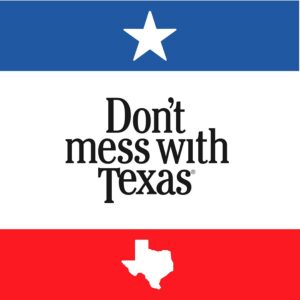 By Gerald L. Maatman, Jr., Jennifer A. Riley, and Emilee N. Crowther
By Gerald L. Maatman, Jr., Jennifer A. Riley, and Emilee N. Crowther
Duane Morris Takeaways: In Chamber of Commerce of the U.S.A. et al. v. NLRB et al., No. 6:23-CV-00553, 2024 WL 1045231 (E.D. Tex. Mar. 8, 2024), Judge J. Campbell Barker of the U.S. District Court for the Eastern District of Texas granted the Plaintiffs motion for summary judgment and denied the Defendants cross-motion for summary judgment. Under the NLRB’s 2023 joint employer rule, even companies who exercise just “indirect control” over the employees of another entity could be considered a joint employer under federal labor laws. The Court held that the NLRB’s 2023 joint employer rule did not provide a meaningful two-part test to determine joint employer status, and that the NLRB’s reason for rescinding the 2020 Rule was arbitrary and capricious. Accordingly, the Court vacated the 2023 Rule and reinstated the 2020 Rule.
This ruling is a huge win for businesses, as it reinstates the 2020 Rule’s heightened “substantial direct and immediate control” standard for determining joint-employer status.
Case Background
In 2020, the NLRB issued a joint-employer final rule, providing that an entity “is a joint employer of a separate employer’s employees only if the two employers share or codetermine the employees’ essential terms and conditions of employment” (the “2020 Rule”). Id. at 12 (quoting 29 C.F.R. § 103.40(a) (2020)). Under the 2020 Rule, a company is a joint employer when it exercises “substantial direct and immediate control” over one or more of the following “essential terms or conditions of employment” – “wages, benefits, hours of work, hiring, discharge, discipline, supervision, and direction.” Id. at 12-13 (quoting 29 C.F.R. § 103.40(a), (c)(1) (2020)).
In 2023, the NLRB rescinded the 2020 Rule and enacted a new joint-employer final rule (the “2023 Rule”). Id. at 14. The 2023 Rule defined a joint employer as an entity that exercised “reserved control” or “indirect control” over one of seven terms and conditions of employment, including: “(1) work rules and directions governing the manner, means, and methods of the performance, and (2) working conditions related to the safety and health of employees.” Id. (29 C.F.R. § 103.40(d)-(e)).
In 2023, Plaintiffs sued the Defendants, challenging the 2023 Rule on two grounds: (i) that it is inconsistent with the common law; and (ii) that it is arbitrary and capricious. Id. at 14-15.
In response, the Defendants cross-moved for summary judgment on the Plaintiffs claims, alleging that the 2023 Rule was based on, and is governed by, common law principles, that it is not arbitrary and capricious, and that the Board acted lawfully in rescinding the 2020 Rule. Id. at 20.
The Court’s Decision
The Court granted the Plaintiffs motion for summary judgment, and denied Defendants cross-motion for summary judgment, thereby “vacating the 2023 Rule, both insofar as [the 2023 Rule] rescind[ed] the [2020 Rule] and insofar as it promulgate[d] a new version of [the 2020 Rule].” Id. at 30.
First, the Court focused on the main dispute between the parties, i.e., whether the 2023 Rule had a meaningful two-step test to determine an entity’s joint employer status, or the 2023 Rule only had one step for all practical purposes. Id. at 20-21. The Defendants argued that the 2023 Rule’s joint-employer injury had the following steps: (i) “an entity must qualify as a common-law employer of the disputed employees”; and (ii) “only if the entity is a common-law employer, then it must also have control over one or more essential terms and conditions of employment.” Id. The Court disagreed, finding that “an entity satisfying step one, along with some other entity doing so, will always satisfy step two,” since “an employer of a worker under the common law of agency must have the power to control ‘the material details of how the work is to be performed,” and the Defendants proposed step two included “work rules and directions governing the manner, means and methods of the performance of duties.” Id. at 22-23 (internal citations omitted).
The Court then analyzed whether the Board lawfully rescinded the 2020 Rule. It opined that “to survive arbitrary-and-capricious review, agency action must be ‘reasonable and reasonably explained.” Id. at 28-29. The Court held that the Board did not provide a “reasonable or reasonably explained” purpose for rescinding the 2020 Rule, and therefore, its recension was arbitrary and capricious. Id. at 29. Since “vacatur of an agency action is the default rule” in the Fifth Circuit when such rule “is found to be discordant with the law or arbitrary and capricious”, the Court vacated the 2023 Rule. Id. at 30.
Implications For Employers
The Court’s vacatur of the 2023 Rule in Chamber of Commerce of USA et al. v. NLRB et al. is an important victory for employers. The 2023 Rule would have made “virtually every entity that contracts for labor . . . a joint employer.” Id. at 25. Moreover, the 2020 Rule, in addition to imposing the heightened “substantial direct and immediate control standard,” provides integral guidance for what actions are considered joint, and what actions are not. The Court’s decision to reinstate the 2020 Rule, therefore, is also a significant win for employers.
